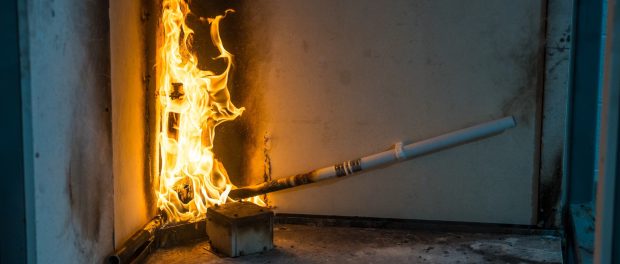Why Plastic Pipes in Building Risers Are a Fire Safety Gamble

Modern skylines showcase towering high-rises, a testament to architectural ingenuity and urban density. However, behind their sleek designs lies a hidden fire safety risk—plastic pipes in building risers.
Building risers are vertical shafts running through every floor of a multi-storey structure, housing essential services like water pipes, electrical cables, and ventilation ducts. They are the building’s central nervous system, but if not properly designed, they can also serve as a conduit for fire. The use of plastic pipes in these spaces has raised serious concerns among fire safety experts, and it’s time to address why this practice is a gamble
The Illusion of Cost Savings
Plastic pipes have become a popular choice in construction due to their lower upfront cost compared to materials like copper. However, these initial cost savings can come at a much higher price in terms of safety and long-term sustainability.
When considering the overall implications, the use of plastic pipes presents significant risks. These include their contribution to fire spread, their environmental impact, and their inability to match the durability and fire resistance of traditional materials.
Developers and contractors who prioritise cost-cutting over safety may be placing occupants at greater risk. As the saying goes, “you get what you pay for,” and in this case, the hidden costs can be catastrophic.
The Riser Effect: Accelerating Fire Spread
By design, building risers create a pathway for fire to travel vertically through a structure. In the event of a fire, flames and smoke can quickly spread through these shafts, engulfing multiple floors in minutes. Plastic pipes exacerbate this problem in several ways:
- Increased fire load: plastic pipes add fuel to the fire, intensifying and prolonging its spread. This increases the risk of structural damage and collapse.
- Rapid flame spread: plastic pipes ignite easily, allowing flames to race through risers. This can block escape routes and trap occupants.
- Toxic smoke and fumes: burning plastic releases harmful chemicals like carbon monoxide, dioxins, and cyanide. These fumes can incapacitate building occupants and hinder firefighters.
Fire-Stopping Challenges
One of the greatest challenges with plastic pipes is containing fires once they start. Fire-stopping – the practice of sealing gaps in walls and floors to prevent fire spread – becomes exponentially more complex when plastic pipes are involved. Unlike copper, plastic melts at lower temperatures, creating holes in fire-rated barriers. These breaches act as channels for flames, smoke, and fumes.
To counteract this, specialised fire-stopping systems are required. These include collars and sealants designed to account for the melting behaviour of plastic. However, these solutions are not foolproof. Even minor installation errors, such as uneven sealant application, can compromise the entire system’s effectiveness.
Evidence from Fire Safety Tests
Extensive research conducted by CuSP and Warrington Fire has shown that plastic pipes perform poorly in fire safety tests compared to copper. Tests revealed that plastic pipes ignite quickly, burn rapidly, and release toxic fumes. Copper pipes, on the other hand, are non-combustible, release minimal smoke, and do not produce dangerous levels of toxic emissions. These findings make a compelling case for reconsidering the use of plastic pipes in building risers.
Copper: A Safer, More Sustainable Alternative
Copper has long been recognised as a reliable material for plumbing and building infrastructure. Its inherent fire resistance, durability, and recyclability make it an ideal choice for critical applications like risers. By choosing copper, developers can significantly enhance fire safety while also benefiting from its longevity and low environmental impact.
The Need for Regulatory Reform
Current building codes in many regions fail to adequately address the fire risks posed by plastic pipes in high-rise structures. While fire safety is a stated priority for the construction industry, regulations often lag the latest research and testing outcomes. Stricter guidelines must be implemented to limit or prohibit the use of combustible materials like plastic in building risers. This is particularly crucial for high-rise buildings where the stakes are higher due to the potential for rapid vertical fire spread.
Building a Safer Future
The safety of our homes and cities depends on the choices made by construction professionals, homeowners, and policymakers. By prioritising fire-resistant materials and advocating for stricter regulations, we can reduce risks and ensure that buildings are safe for generations to come.
The next time you admire a skyscraper or walk through a high-rise, remember: the materials hidden behind the walls can mean the difference between safety and disaster. When it comes to fire safety, there is no room for compromise. It’s time to make informed decisions that protect lives and safeguard our communities.

